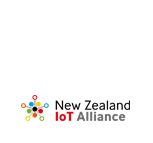The Internet of Things (IoT) is playing a key role in the future of sustainable farming, as showcased in a trial project at Kowhai farm.
The IoT will ultimately be able to provide answers to when a crop should be planted to maximise growth, provide an insight into soil conditions, and when is the best time to irrigate.
Over the past growing season, Kowhai Farm, operated by the Foundation for Arable Research (FAR) and owned by Lincoln University, has hosted a number of IoT sensors in a demonstration trial project to look at the real-life results of emerging agritech innovations.
The project is part of the NZ IoT Alliance’s arable farming technology trial in collaboration with the Ministry of Business, Innovation and Employment.
With a changing climate, growing seasons are becoming more unpredictable each year, and monitoring sensors will be increasingly necessary to gather data on a farm’s crops and other assets.
Phase one of the project saw four technology companies join together to form the Tru Track consortium. These are Tru Track, Lincoln Agritech, Met Technology Limited and Aquaflex NZ, which is a division of On Farm Data.
Blair Miller from Lincoln Agritech says that 16 sensors were deployed around Kowhai Farm, each hooked up to the internet.
“Each sensor provides valuable data that supports the arable farming operation on site. Having real-time and easy access to data is key to understanding the needs of the operation,” says Blair.
Tru Track installed sensors at different locations across the farm, including meterological, GreenSeeker canopy sensors, Aquaflex soil moisture, and a nitrate sensor.
“The sensors monitor and generate important data such as weather conditions, plant health, soil moisture and nitrate levels which can then be used to support actions by the farmer into useful information,” says Blair.
“We want farmers to see the technologies that exist to support them.”
The Internet supports the sensors to translate this big data into useful information including the best growing degree days, when irrigation is needed and also monitors for over watering, when plants and insects will flower and mature, and how fast they are growing.
Sophisticated processing of this data allows users to understand in real-time when their crops’ growth is maximised, and in turn improves productivity all year long.
Agritech technologies can help to improve sustainability and cut down operating costs on farms. By adopting IoT devices, farmers will have the most important information that they need, right at their fingertips.






